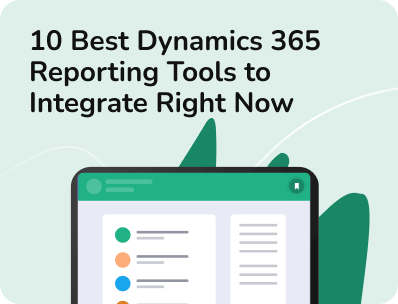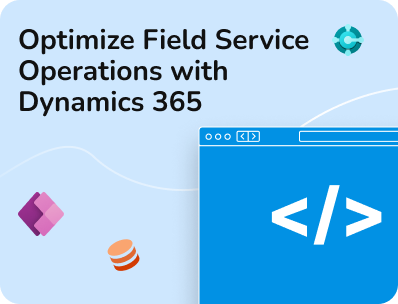- Our Models
- ServicesHesitant in service?
Get in touch with us with your business problem and we’ll consult you on the suitable service solution.
- ConsultantsApplicationsLegacy Support
- Industries
- Our Company
 About Us
About UsLearn more about our HireDynamicsDevelopers portal and the team behind it.
Case StudiesRead successful stories from our clients across various industries.
ServicesFind the right service according to your specific business needs.

- Locations
- Our Models
- ServicesHesitant in service?
Get in touch with us with your business problem and we’ll consult you on the suitable service solution.
- ConsultantsApplicationsLegacy Support
- Industries
- Our Company
 About Us
About UsLearn more about our HireDynamicsDevelopers portal and the team behind it.
Case StudiesRead successful stories from our clients across various industries.
ServicesFind the right service according to your specific business needs.

- Locations
How Much Does Microsoft Dynamics 365 Implementation Cost?
Updated: December 13th, 2024 by Ivan Farafonov
Dynamics 365 implementation cost is a comprehensive concept that depends on many factors. The complexity of customization, integration, data migration, system tasks, and team size all affect the final bill. In addition, D365 is a large and powerful ecosystem with many modules. Thus, the cost of deploying the platform will depend on which tool you need and what tasks it should perform for your firm.
In this article, we’ll explore what components Dynamics 365 includes with their prices, what processes a full implementation project plan involves, and finally, how much Microsoft Dynamics implementation costs. With the Microsoft Dynamics 365 implementation cost guide, you may plan your budget and find the most cost-effective and high-quality solution.
Factors Affecting Microsoft Dynamics 365 Implementation Cost
To begin with, let’s look at the key factors that influence price formation. The Microsoft Dynamics implementation cost depends on your needs, goals, and desired outcomes. It includes all your requests, from choosing the right module to integrating with other products. Let’s analyze each aspect and why it matters:
Licensing Costs
Dynamics 365 is a large platform with many components. However, your company doesn’t need to connect all of them. If you want to improve customer engagement, you can choose the Customer Service module: its price starts at $50.00 user/month. Other tools may be cheaper or more expensive. For example, Supply Chain Management costs from $180 user/month. It is a license cost that will be in the final price.
Configuration and Customization
It is important to understand that a poorly configured system will hardly work for you. That is why implementation is much more than just installing the module. It includes careful tool configuration and customization to the specific industry challenges.
Integration with Existing Systems
If your company already operates other tools, consider the importance of integration. It is necessary to ensure a smooth exchange of information and establish a straightforward flow of all processes. Integration can be between D365 modules or third-party software. Of course, it involves additional MS Dynamics 365 implementation cost.
Data Migration
When moving from one program to another, it is crucial to save current information, reports, and customer details. To avoid losing content, implementation partners help to transfer content to the new app.
In addition, the total D365 implementation cost is affected by possible consultations, user training, and further support. These activities are necessary to teach your staff to use the tools correctly and to keep the software running smoothly for a long time.
Choose our consultants for an affordable Microsoft Dynamics 365 implementation!
Selecting Microsoft Dynamics 365 Core Components to Suit Your Needs
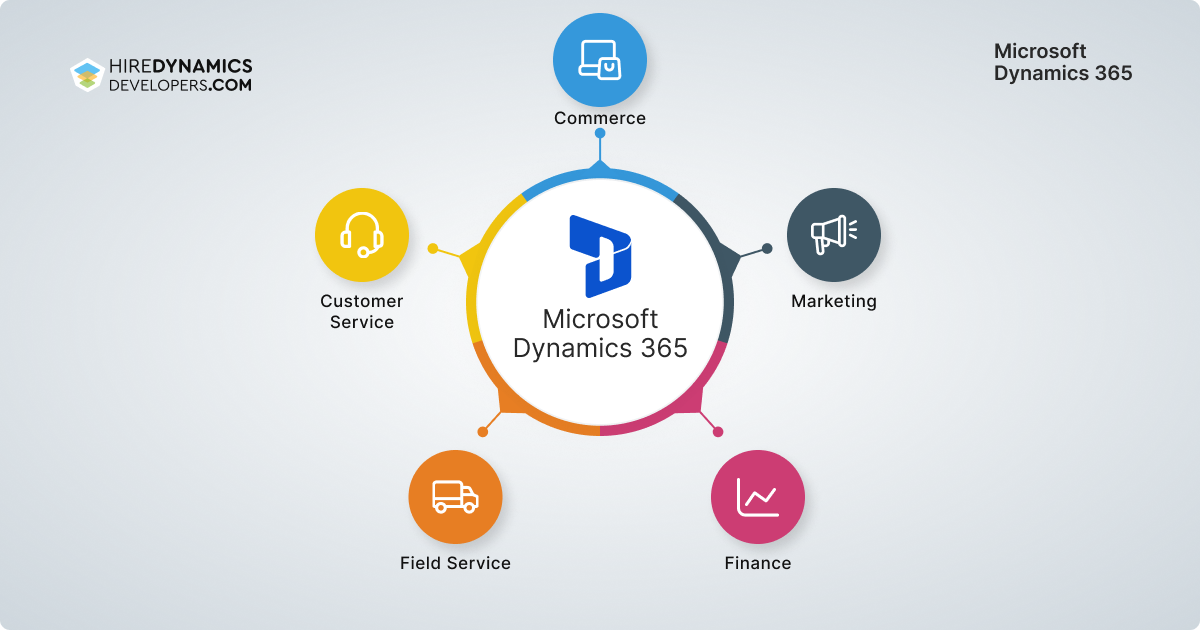
The D365 architecture allows you to cover all aspects of your business with its tools. The software modules are focused on financial, sales, supply chain management, lead generation, and building successful customer relationships.
Depending on the function of the modules, the Microsoft ecosystem may be divided into 3 types:
- ERP or Enterprise Resource Planning is a system of cloud-based platforms and tools that help to work with the company’s internal processes. Mostly, the modules are aimed at financial management. However, some solutions work with human resources, sales, and marketing.
- CRM or Customer Relationship Management is a group of tools that improve customer relations. They allow you to collect insights on customer preferences, create individual offers, and improve the service. The most popular modules are Customer Service, Customer Engagement, and Customer Insights.
- Microsoft Dynamics Business Central is considered a separate subsystem. This module includes many functions and can satisfy almost all company needs. For example, it can help with budgeting, distribution, production, and other issues related to project management.
We have prepared a table with information on each of the modules. Here you can find the
Microsoft Dynamics 365 pricing policy and special features of the tools to choose the most relevant one for your business.
Dynamics 365 application | Description | Cost per user | Team member license cost |
|---|---|---|---|
Business Central | It is a comprehensive ERP with modern functions for managing finances, sales, deliveries, and inventory balances. This is an excellent option for small and medium-sized businesses. | $50-195 | From $8 |
Sales | AI-powered CRM solution to close more deals and increase seller efficiency. Suitable for businesses of all sizes looking to improve sales performance. | $65-135 | |
Customer Service | Empowers agents to resolve issues quickly using AI and automation. Ideal for companies focused on improving customer support. | $50-195 | |
Customer Insights | Collects customer data with real-time journeys and Microsoft Copilot, suitable for mid to large enterprises focused on personalized customer experiences. | $1,500 | |
Contact Center | All-in-one solution transforming customer engagement across digital and voice channels, ideal for large-scale customer service operations. | $95-110 | From $8 |
Field Service | Transforms service operations, delivers exceptional service, and improves customer experiences, perfect for businesses with a mobile workforce. | $50-95 | From $8 |
Remote Assist | Real-time problem-solving from any location to increase productivity. It is great for businesses with remote or field operations. | $65 | $20 |
Finance and Operations | It is the best tool for tracking financial reports and controlling cash flows. Designed for large enterprises needing comprehensive financial management. | $180-300 | |
Supply Chain Management | Flexible, collaborative platform to navigate disruptions, suitable for large firms managing complex supply chains. | $180-300 | |
Guides | Improves remote collaboration with step-by-step holographic instructions. | $65 | $20 |
Human Resources | Creates a thriving workplace by managing HR functions efficiently. It is a perfect option for mid to large-sized companies. | $120 | $4 |
Commerce | Delivers personalized buying experiences for customers and partners, ideal for businesses in retail and e-commerce. | $180-4000 | |
Project Operations | Connects project-centric businesses in one application, perfect for firms managing multiple projects and resources. | $120 |
Please note that to use Dynamic to its full potential and cover all your company’s needs, you may need several modules. In this case, integration is necessary to ensure the tools work together seamlessly. It will entail additional costs for integrating Dynamics 365.
Microsoft Dynamics 365 Configuration and Customization Cost
Microsoft Dynamics 365 implementation involves full customization and configuration of all tools. It allows you to adapt the modules to the specific needs of the industry and team and make them as convenient as possible. Why is it necessary?
- First, with careful configuration, you may choose the necessary software firmware and create a well-working toolkit for your team. It ensures smooth operation and helps to avoid bugs and errors. Time spent for setting influences the total Dynamics 365 implementation cost.
- As for customization, it is a necessary step to adapt the software to your tasks. It allows you to create more convenient dashboards, customize custom workflows, and ensure security. As a result, you get a user-friendly toolkit with features that work for you.
Below, we have listed the most common MS CRM implementation methodologies, and the option you choose is largely dictated by your business needs, size of your company and the budget.
The customization price depends on the complexity, company size, and the selected settings and affects the cost of Dynamics implementation. In a nutshell, Microsoft Dynamics 365 services may include the following ones:
- Platform Settings;
- Security Settings;
- User Interface Customization;
- Dashboards and Reports;
- Data Management;
- Custom Entities and Fields;
- Plugins and Custom Scripts;
- Custom Workflows and Processes;
- AI and Machine Learning Integration.
Speaking about how much is Dynamics 365 implementation for firms of different sizes, the picture looks something like this:
Company size | Cost |
|---|---|
Small businesses | $5,000 - $10,000 |
Medium Companies | $10,000 - $75,000 |
Large Enterprises | $75,000 - $200,000 |
So, additional settings affect the final Microsoft Dynamics implementation cost. That is why it is important to understand the current prices related to customization. It allows you to plan your budget and expenses for Dynamics 365 implementation in advance.
Cost of Integration with Existing Systems
Integration with other software is another factor that greatly affects the cost of implementing Dynamics 365. Here we have two cases.
- Usually, companies use several tools to support all processes. In this case, when implementing Dynamics products, most teams already work with some systems to set up workflows. These may be APIs, web services, ERP and CRM, monitoring and analytical tools, or other Microsoft products. All of them need integration with the new software to ensure easy information exchange.
- In contrast, for newly established companies that are just starting and choose D365 as their core platform, the issue will be integration between different products. For example, experts need to connect the Marketing and Customer Insights modules to strengthen their effect and facilitate the flow of information.
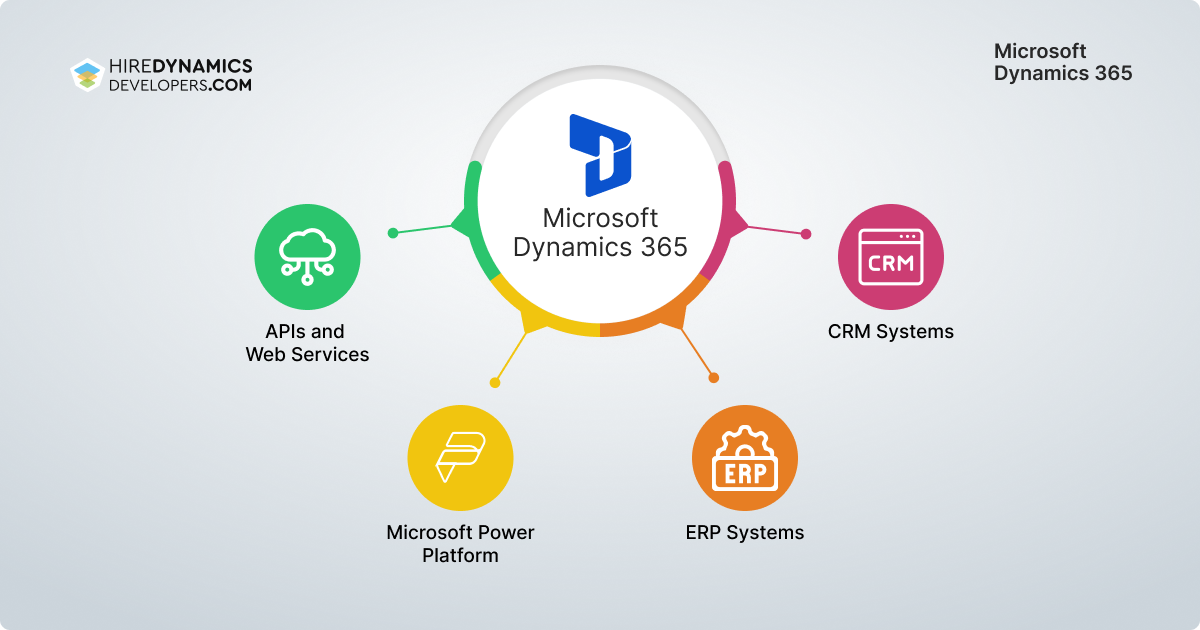
In any case, integration is a complex process that requires time, effort, and expert skills. It involves detailed analysis, custom development, testing, and support. All together or separately (depending on your needs) forms the price.
You may review the cost of the main integration processes below for a deeper understanding of your budget and possible expenses of Dynamics 365 implementation price:
Tasks | Description | Cost |
|---|---|---|
Business Analysis and Requirements Gathering | Identifying business needs and determining solutions to business problems. It involves stakeholder interviews, workshops, and documentation. | $5,000 - $20,000 |
Integration Design and Architecture | Planning and creating the blueprint for integrating different systems and software. | $10,000 - $50,000 |
API Management Tools | Configuring and managing APIs to allow different software applications to communicate with each other. | $1,000 - $20,000 per year |
Custom Development | Developing tailored software solutions to meet specific business requirements. Involves coding, testing, and deploying software. | $50 - $200+ per hour |
Data Mapping and Transformation | Converting data from one format to another to enable data integration between different modules. | $10,000 - $50,000 |
Integration Testing | Verifying that integrated systems and components work together as expected through regular testing processes. | $5,000 - $30,000 |
Documentation | Creating detailed technical documents and user guides to support the integration process and future maintenance. | $1,000 - $5,000 |
Monitoring & Support | Maintenance of the integrated systems to ensure high performance and security. | $6,000 - $60,000+ per year |
Data Migration Cost
The biggest fear of many organizations when switching to a new system is data loss. It applies to financial reports, customer details, analytics, or other important information. Migration is a necessary step that allows you to save all the content of the previous program and move it to the new software. Of course, it involves several complex processes that help keep the content intact and secure during the transfer. So, if you have a lot of data that needs to be transferred to a new platform, consider the migration costs, which will be included in the MS Dynamics implementation cost.
Below you can see the possible costs associated with migration and a brief explanation of why these processes are important. Note that prices may vary from Dynamics 365 migration company. Also, important factors that form the final Microsoft Dynamics 365 implementation cost are the amount of data, the complexity of the operation, and the timing of the work.
Essentially, an On-Premise solution will cost you an average of between $3,000 and $5,000 per user – which can add up depending on the number of users and third-party products – and the annual maintenance fee. A cloud-hosted solution on the other hand will cost between $230 to $530 per user, per month, with the service fee costing up to 4 times the total cost of your On-Premise and Cloud software.
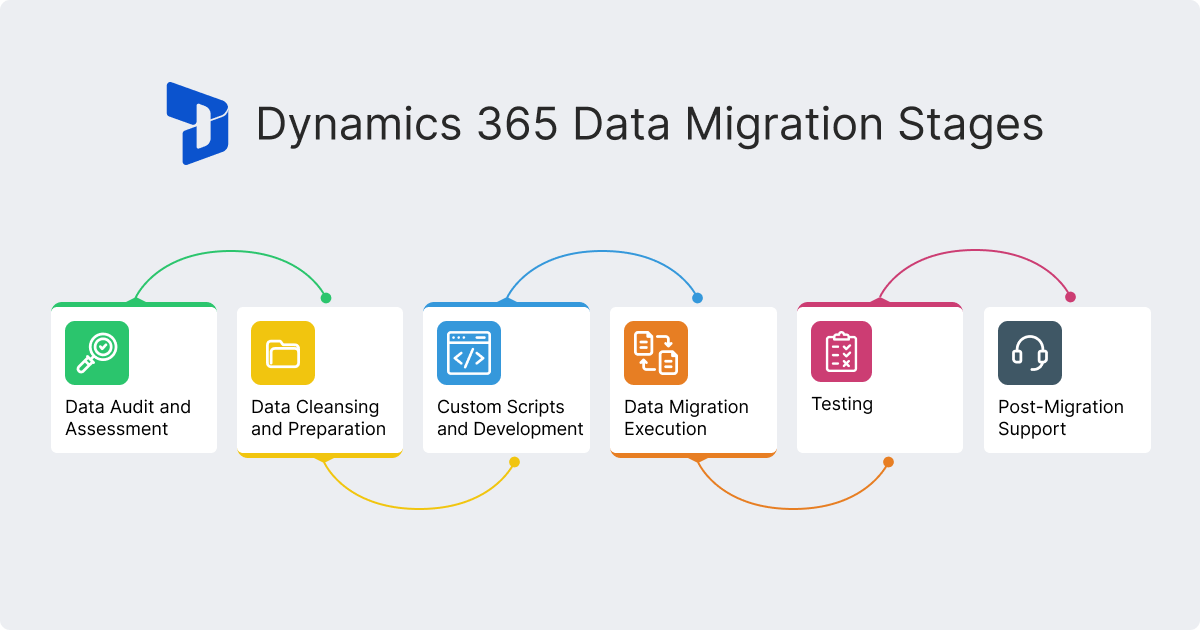
Tasks | Description | Cost |
|---|---|---|
Audit and Assessment | Evaluating existing assets to identify issues and determine readiness for migration. Ensures quality and identifies potential risks. | $5,000 - $20,000 |
Migration Strategy | Developing a comprehensive plan for moving data, including timelines, methods, and risk management. Provides a clear roadmap, reduces uncertainties, and ensures a structured approach to migration. | $5,000 - $15,000 |
Data Cleansing | Correcting or removing inaccurate, incomplete, or irrelevant content before migration to improve quality and integrity. | $10,000 - $50,000 |
Data Mapping | Creating a framework to transform content from its source format to the target format. | $5,000 - $20,000 |
Custom Scripts and Development | Writing custom code to handle specific migration tasks and ensure integrity. | $10,000 - $50,000 |
Extraction | Pulling data from its source systems in preparation for migration. Ensures all necessary information is captured and ready for transformation and loading into the target system. | $5,000 - $20,000 |
Transformation | Converting content into a new format or structure to fit the program requirements. | $10,000 - $40,000 |
Data Loading | Importing the transformed data. | $5,000 - $20,000 |
Testing | Verifying that material has been accurately and completely transferred to the new module. | $5,000 - $20,000 |
Documentation | Creating detailed records of the migration process, including steps taken and any issues encountered. | $2,000 - $10,000 |
Post-Migration Support | Ensuring stability and continuous operation of the new software to cope with post-migration issues. | $5,000 - $15,000 |
Microsoft Dynamics 365 Consulting and Implementation Services
Microsoft Dynamics cost of implementation involves the complete deployment of Dynamics 365 with the customization of the necessary tools. This process takes most of the time and requires the expertise of specialists. It is important to ensure the smooth operation of the software and to adapt the tools to the tasks of your company. Here are a few factors that affect the price of Dynamics 365 implementation in the USA:
The scope of the project. The complex projects have a huge amount of material and processes that need to be covered by the new software. So, the larger the task, the more effort and time specialists will spend on its realization.
The size of the organization. The size of the company also affects Dynamics 365 implementation pricing. Small firms and startups can get by with one or more modules to cope with their tasks. At the same time, large corporations need many tools for different processes. It may reduce or increase the cost accordingly.
Level of customization required. Your customization requests are another factor that forms the final price. It will cost more if you need a full configuration of many tools. However, keep in mind that this is a worthwhile investment that can bring great returns to your business in the long run.
Expertise of the consulting firm. Finally, the price of Microsoft Dynamics 365 implementation services may vary depending on the expertise of the firm. Thus, the assistance of junior developers will be cheaper, while the work may take longer. On the other hand, senior experts may charge more.

Tasks | Description | Cost |
|---|---|---|
Project Management | Overseeing the entire data migration project, ensuring deadlines are met, managing communication among team members, and handling any issues that arise. It is critical for keeping the project on track and within budget. | $10,000 - $50,000+ |
Change Management | Facilitating smooth transitions for employees by managing how changes are integrated within the organization. Dynamics 365 consulting services include training, communication plans, and addressing resistance to change. | $5,000 - $25,000+ |
Customization | Developing well-customized software solutions and modifications to meet specific business requirements. It guarantees you get the program with convenient tools for you. | $10,000 - $30,000 |
Integration | Combining different systems and ensuring they work together seamlessly. It includes API development, middleware solutions, and synchronization processes. It is vital for creating a cohesive IT environment where data flows smoothly across platforms. | $5,000 - $20,000 |
Training and Support Services
Finally, when implementing Dynamics 365 comes to an end, it’s time to think about the future of the system. As with any software, D365 modules require regular support and training to ensure correct use. That’s why it’s important:
Prevent errors. Thoroughly training your employees to use the tools helps to avoid mistakes, breakdowns, and operational problems. In addition, regular check-ins of the system are key to preventing major breakdowns and failures.
Keep your content safe. Good metering and security updates help to keep confidential data secure. This is especially important if you are dealing with customer details, financial reports, and other sensitive information.
Preserve system durability. The implementation methodology is designed to keep your modules up and running for years to come. This is possible thanks to regular health checkups, updates, and fixes.
System support expenses are also associated with Dynamics 365 implementation cost. Here is an estimate of how much each service can be worth.
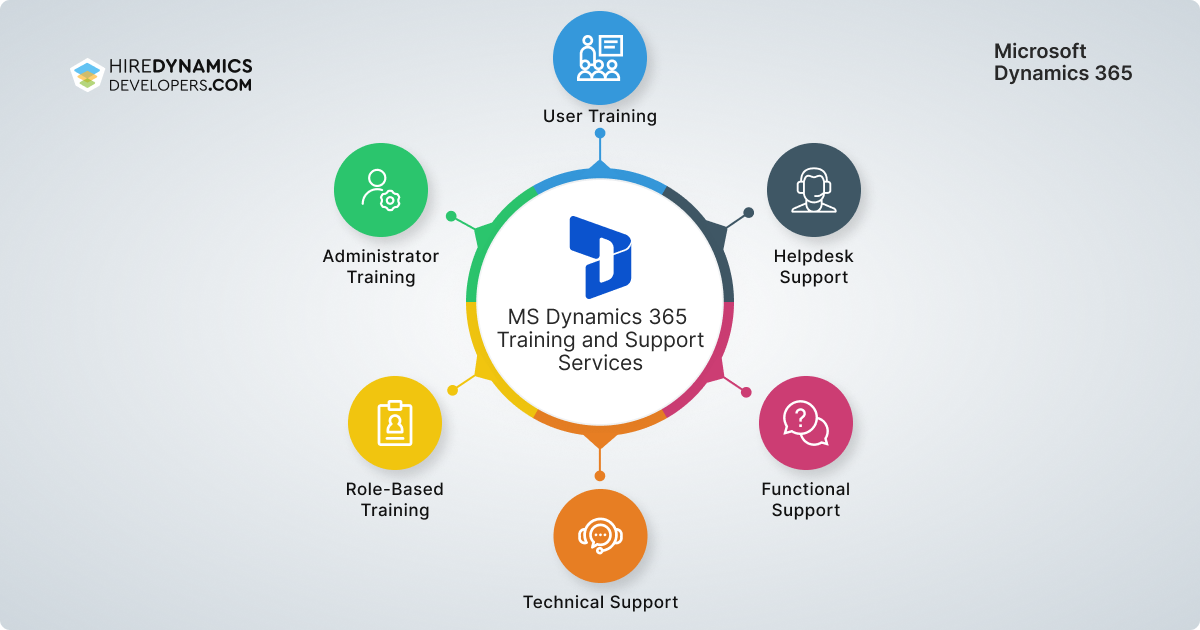
Tasks | Description | Cost |
|---|---|---|
User Training | Training end-users on how to effectively use the new system. It ensures smooth transition and adoption. | $2,000 - $10,000 per session |
Administrator Training | Specialized training for system administrators to manage, configure, and maintain the new modules. | $5,000 - $15,000 per session |
Role-Based Training | Tailored training programs based on specific roles within the organization. It may be learning programs for sales managers, marketing specialists, or accountants. | $3,000 - $12,000 per session |
Technical Support | Providing technical assistance to troubleshoot and resolve issues during and after the implementation. | $50 - $150 per hour |
Functional Support | Support focusing on the functionality and usability of the new system to ensure it meets business needs. | $50 - $150 per hour |
Helpdesk Support | First-line support for end-users to resolve common issues and provide guidance. | $1,000 - $5,000 per month |
Some of Our Dynamics Experts
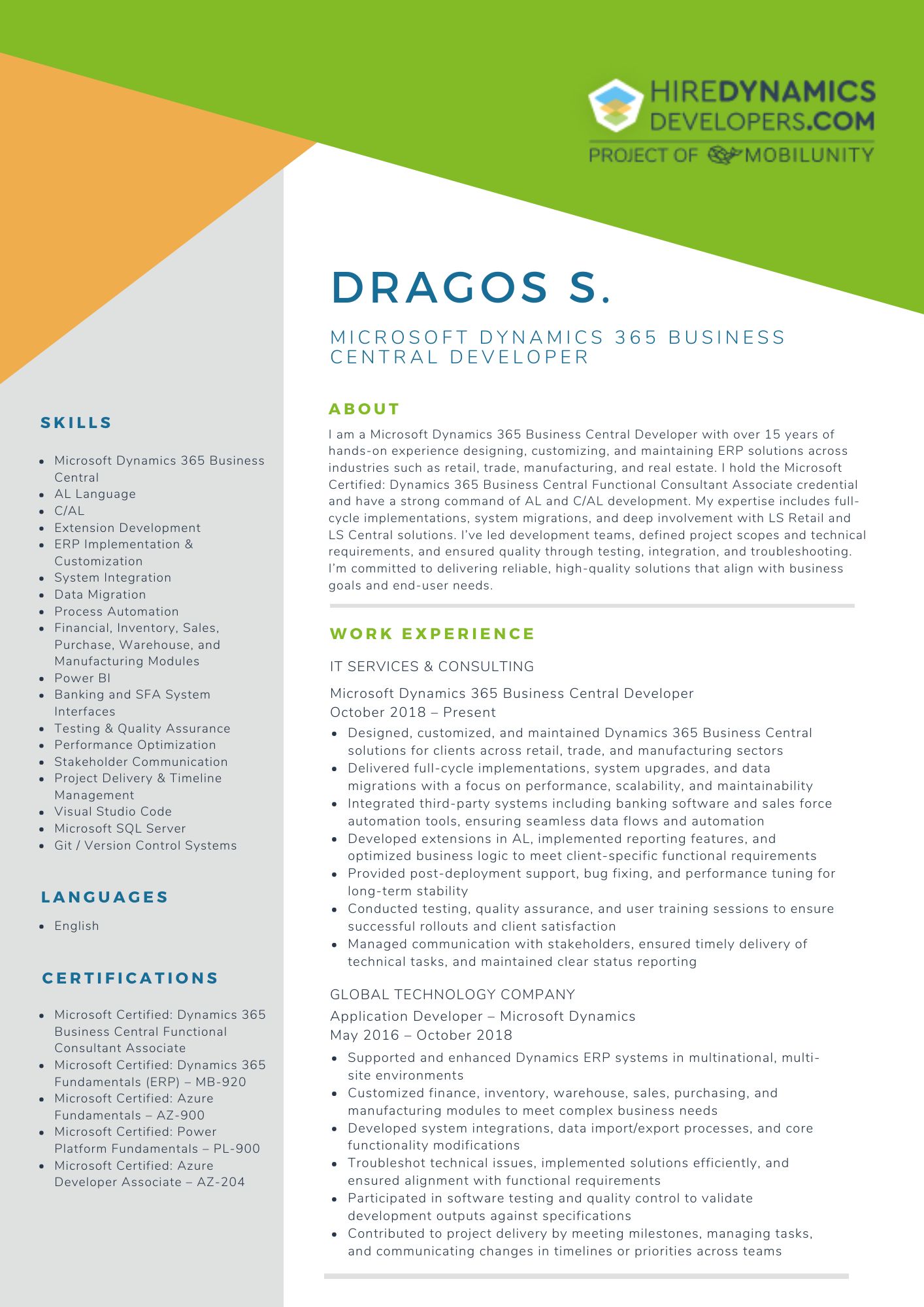
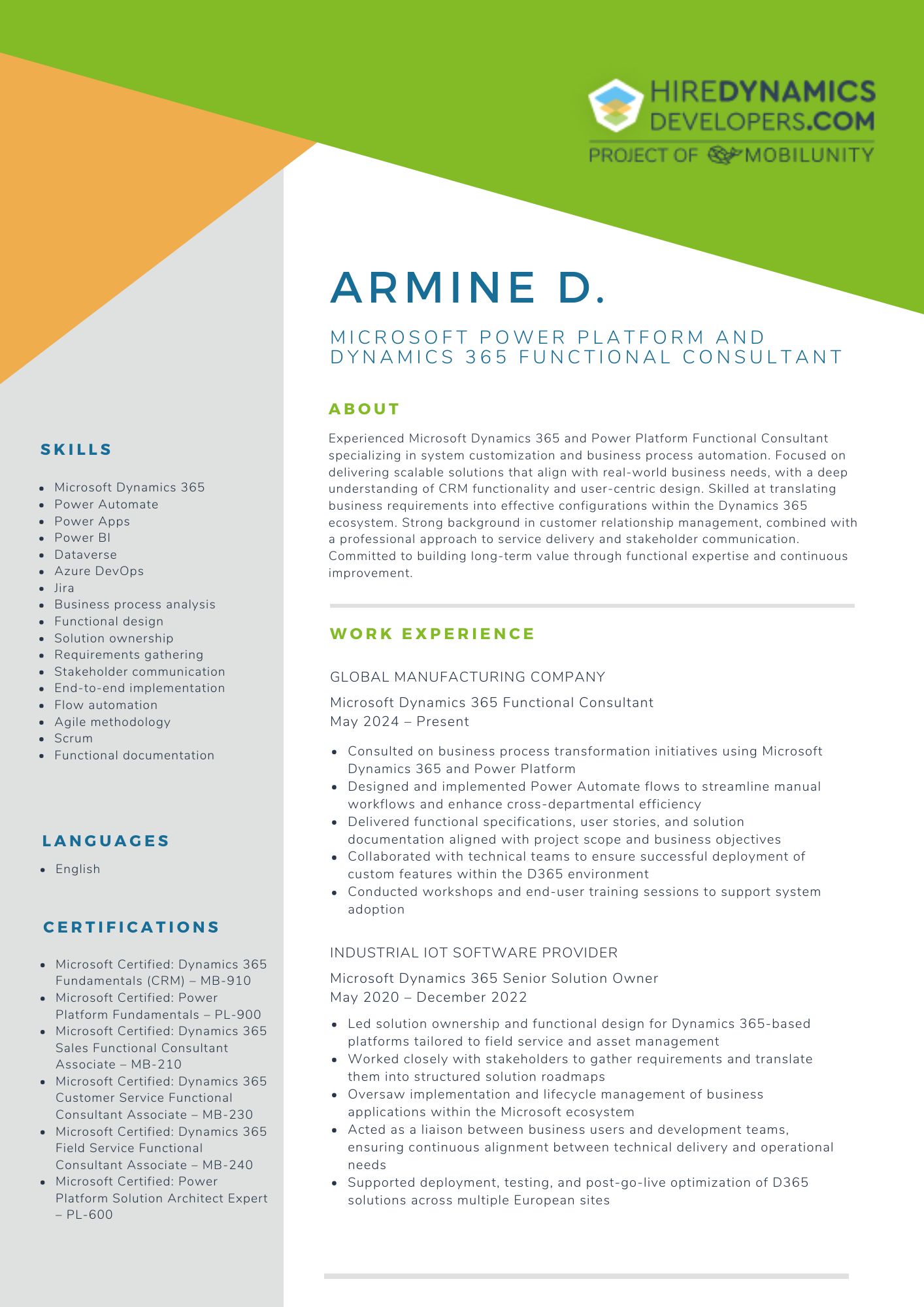
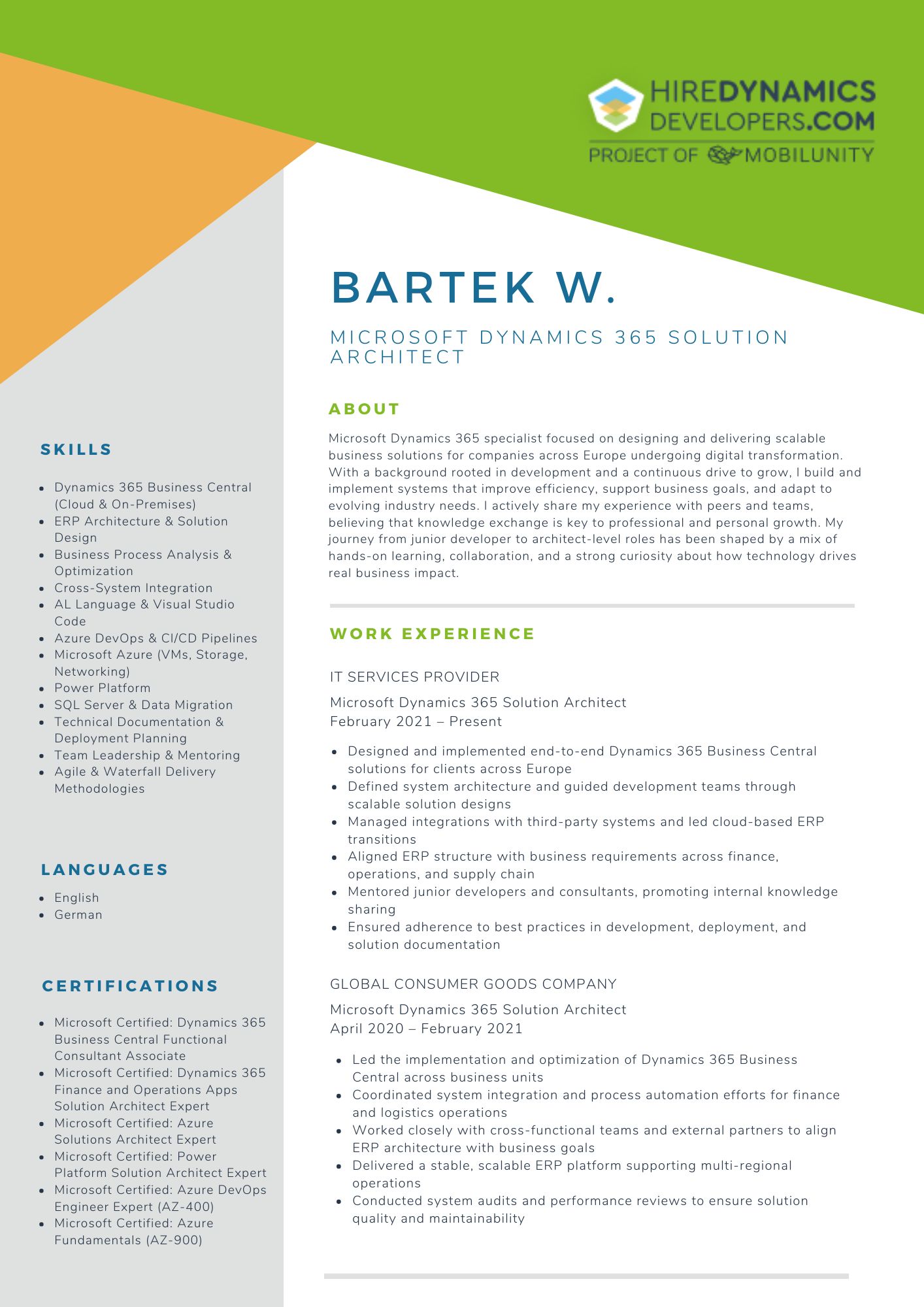
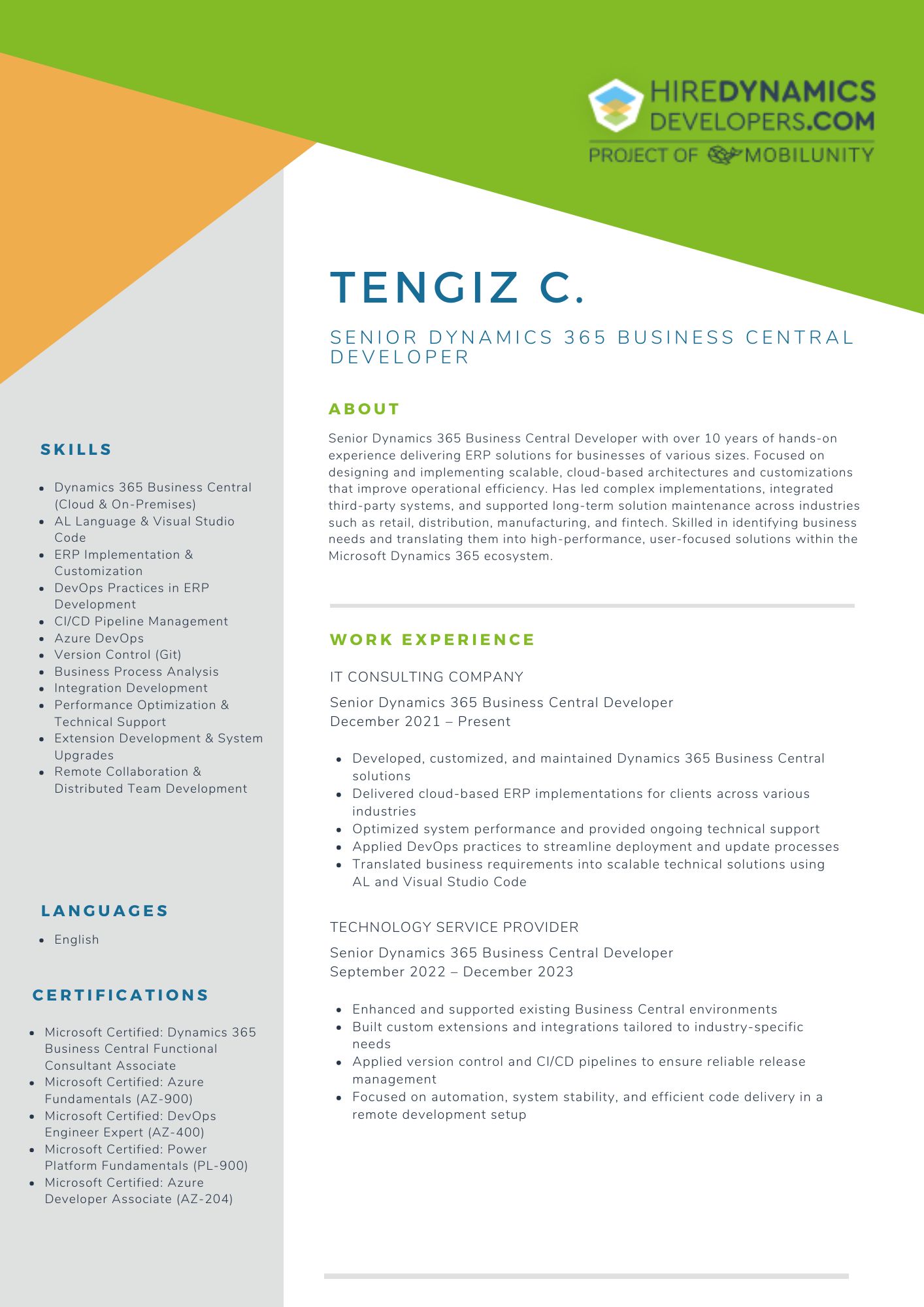
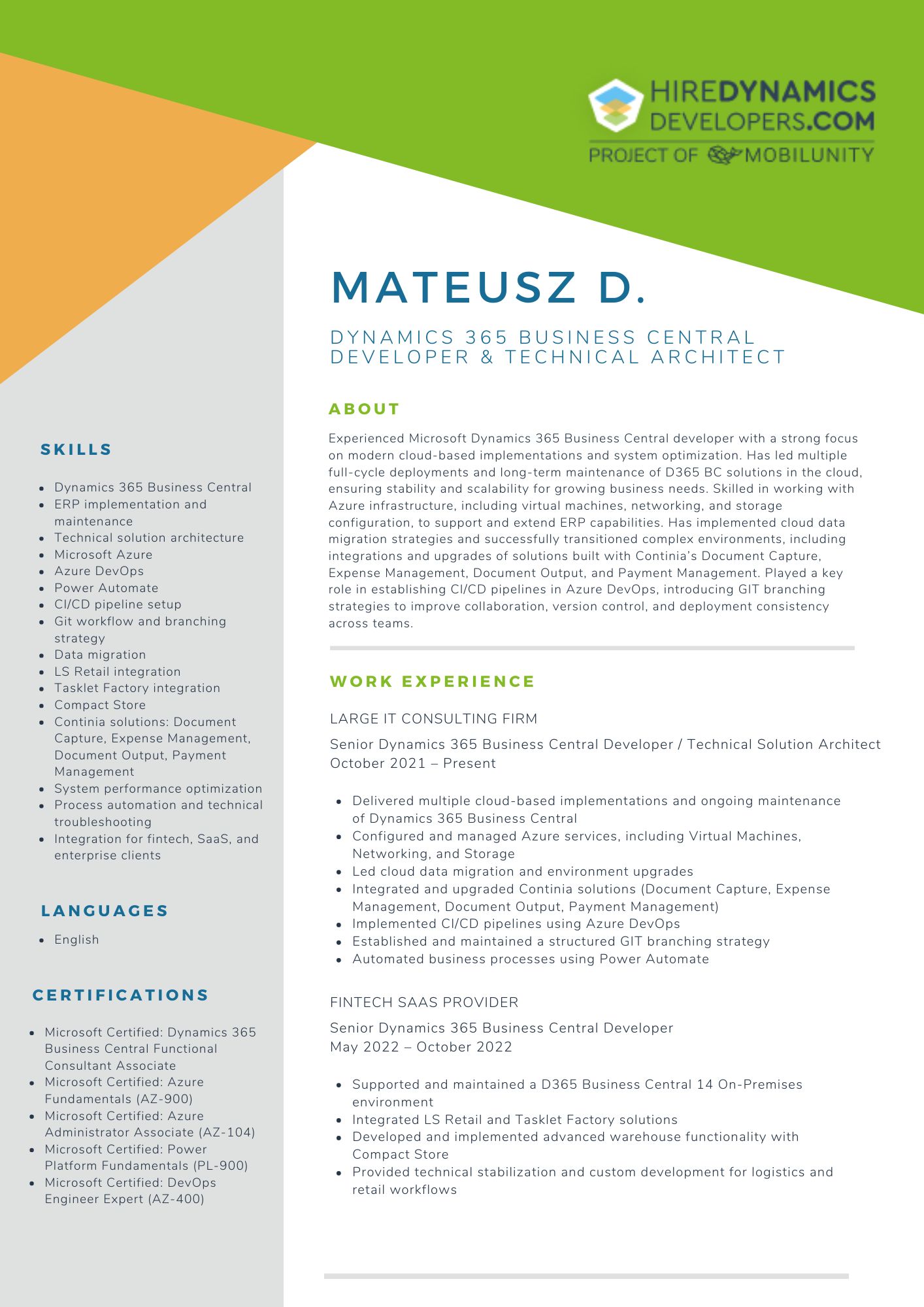
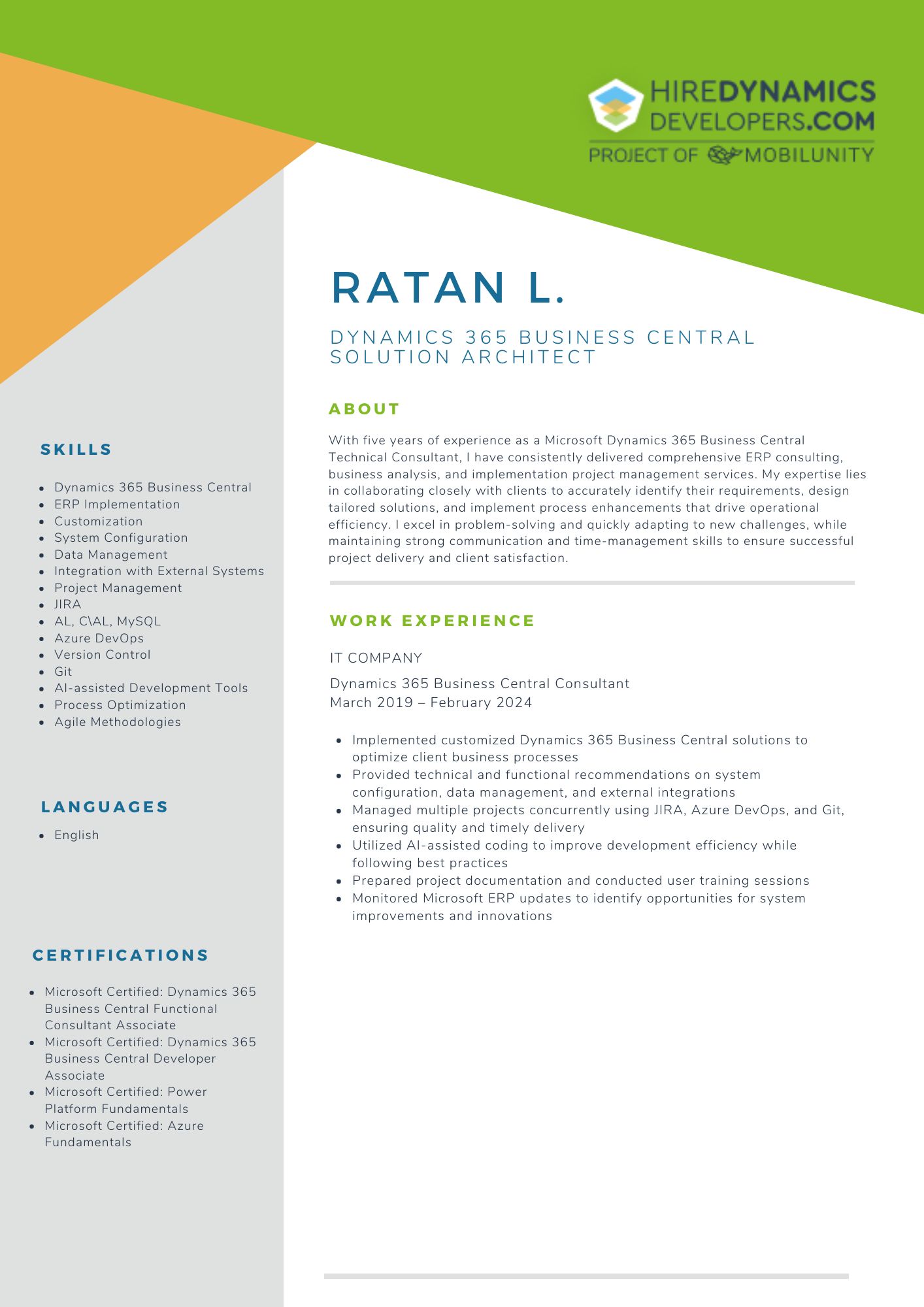
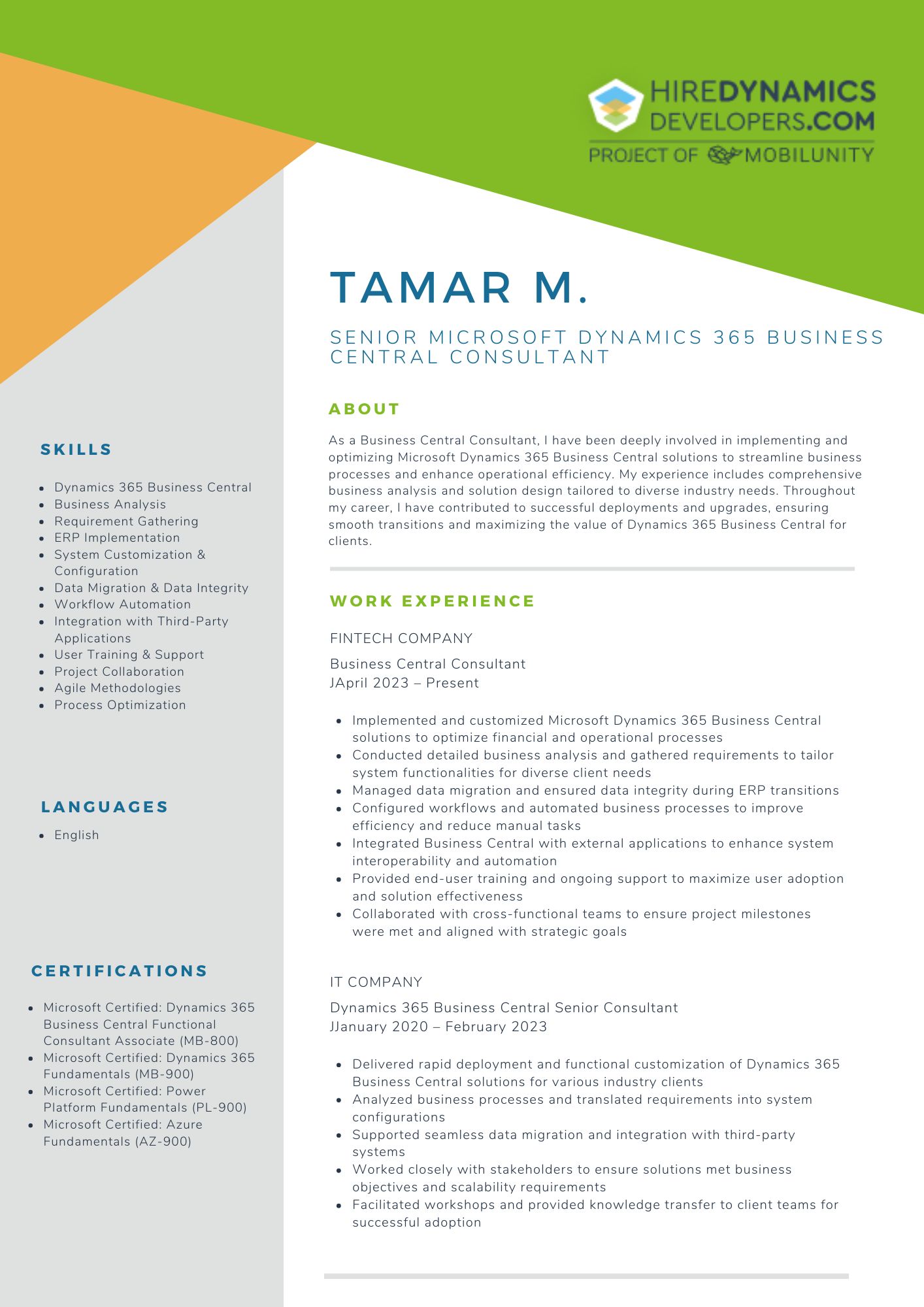
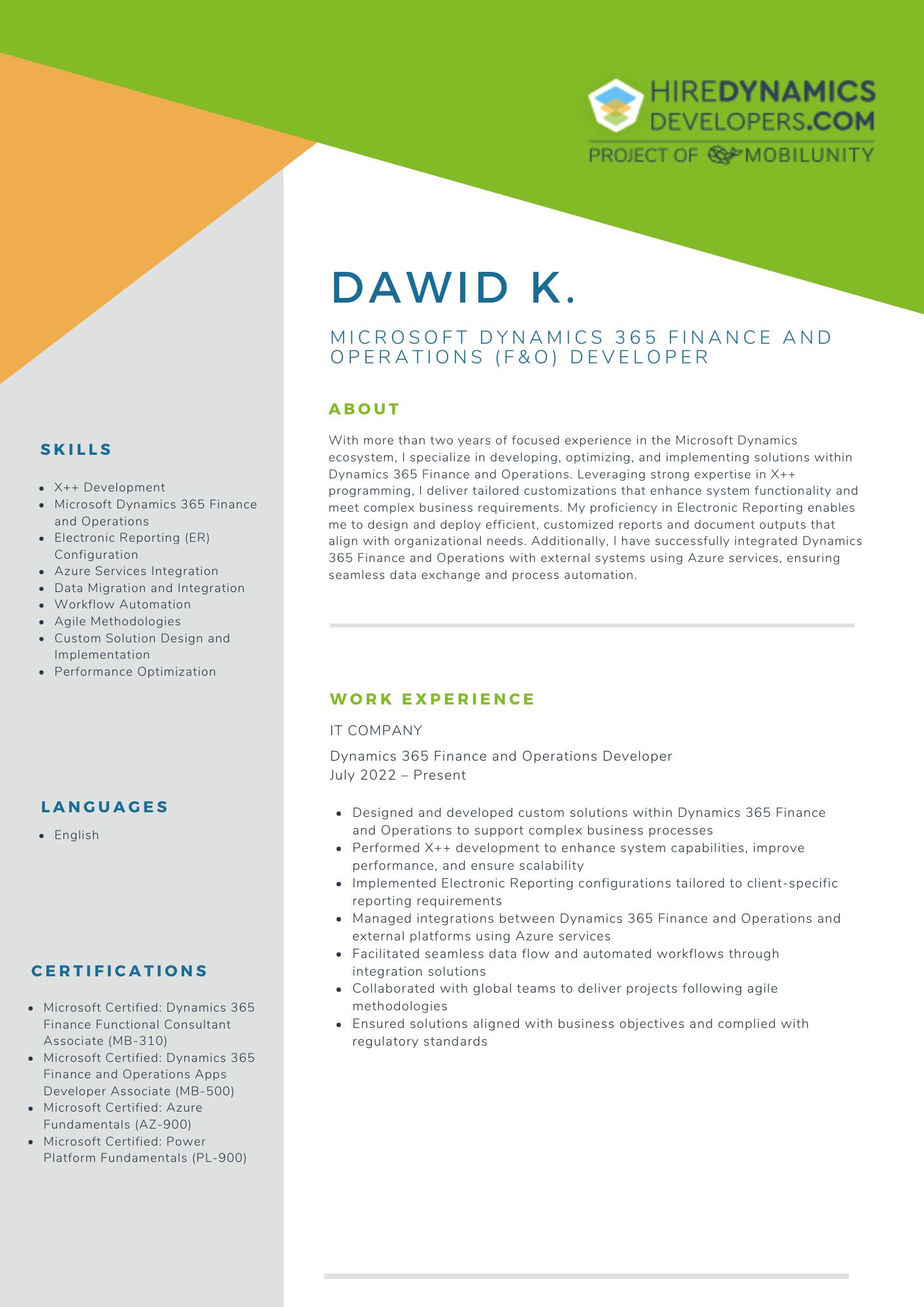
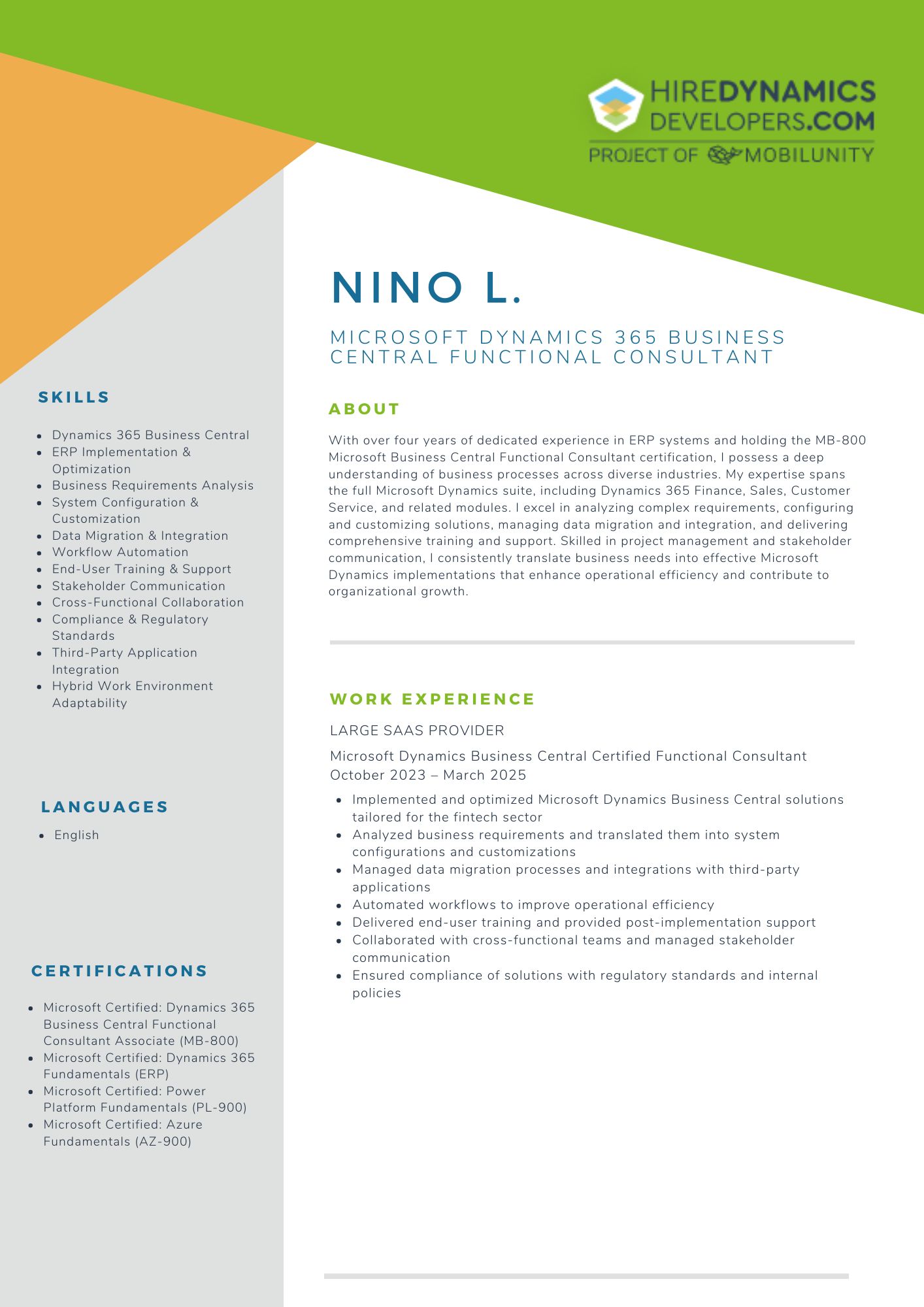
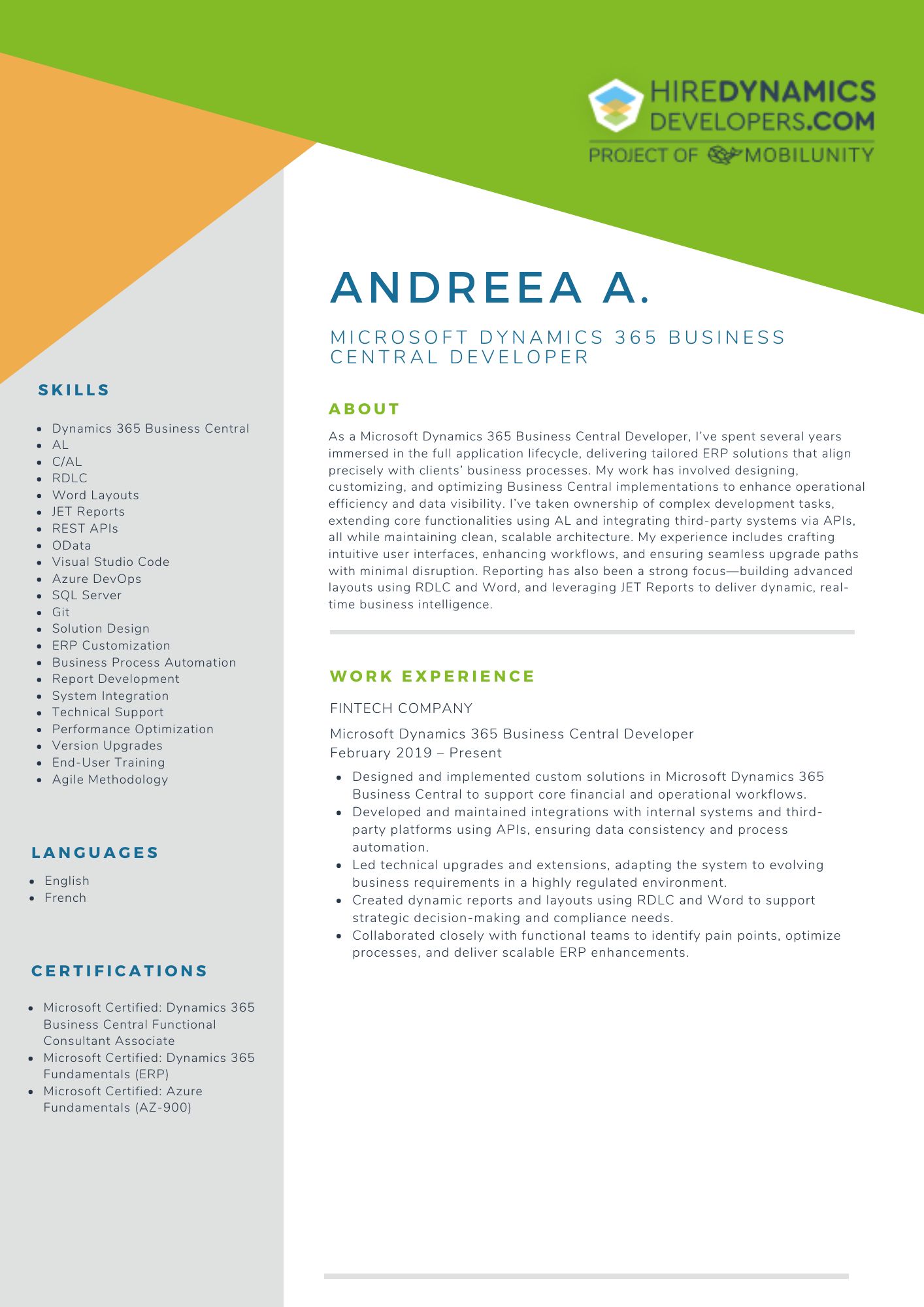

How Can HireDynamicsDevelopers Help You?
As you can see, Dynamics 365 implementation is a series of complex processes. They are designed not only to install the system but also to customize it according to the specific requirements and ensure smooth and long-term operation. The average cost of Dynamics 365 implementation varies depending on many factors, including the project complexity and team size. So, how much does Microsoft Dynamics implementation cost? Considering all expenses, the MS Dynamics implementation cost may range from $20,000 to $300,000+. For smaller companies, it will be cheaper, while large companies with complex tasks will have to pay more for the full implementation.
If you’re looking for a development team to handle your project, we are here to help. We find reliable and skilled Microsoft Dynamics 365 developers who may cope with complex software, customize modules, and provide training and support. This approach allows you to reduce costs while getting high-quality results. Below you can see how to cooperate with us.
Discussion
First of all, we will discuss your wishes and goals for the platform. Are you looking for a full-time development team for Microsoft Dynamics 365 rapid implementation or do you need a part-time consultation? Our managers will clarify all the details to find the right candidates.
Search for Candidates
Based on your requests, we search for specialists in our databases. We review the technical and soft skills that will ensure the smooth running of your project. If you’re looking for a team in a specific location, we look at local experts, for example in the UK or other countries.
Your Feedback
We provide selected resumes for your evaluation. We are waiting for your feedback after reviewing the candidate profiles. Then, our managers help to organize the job interviews to understand experts’ experience and evaluate their fit for your team.
Direct Cooperation
Once you have decided on your ideal implementation partner, you start working together. You control the entire process and can monitor the performance of the development team. This way, you are fully aware of all the processes. You may provide comments and real-time suggestions for the future platform.
Wrapping Up
To sum up, MS Dynamics implementation is a multi-stage process that is designed to fully integrate the new system into your workflow. It takes some time and requires the expertise of specialists to configure all tools and save your content. How much does it cost to implement Dynamics 365? Dynamics prices include many factors that affect the formation of the total check:
license prices of the main components;
integration with other systems;
customization
data migration;
consulting;
employee training and system support.
In addition, you should consider the scope of the project and your expectations for the future software. We estimate that the total price is $20,000 – 300,000+.
If you are planning to start working with Dynamics and are looking for experienced developers or consultants, contact us to find a reliable team quickly and cost-effectively.
Need expert assistance in your Dynamics implementation?
Hire Dynamics consultants with us!
Outline
Christoph G.
20 Hours / Week
Bartek W.
20 Hours / Week
Arvid O.
20 Hours / Week
Request Our Services
Let’s start working together now to transform your approach to business!
Your Partner Recognized in Dynamics Community











